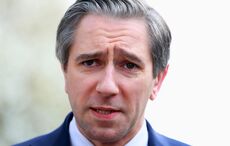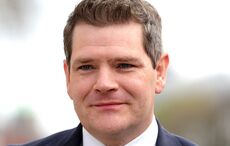Award winning Northern Irish photographer Charles McQuillan found he had a clinical eye for detail when he decided to photograph his own heart surgery.
The father-of-two realized that his surgery would make a stunning series of shots. The project also had an added bonus of distracting him from the enormity of the event. He said "For me, taking these pictures is a way of dealing with it - my own forms of catharsis."
The series of images are far from clinical. They include the tearful shots of him saying goodbye to his sons and a shot of him in the distance on the operating table.
He described the experience as "quite surreal".
"I felt slight removed from myself; it was almost like an out-of-body experience...I can hardly believe it's me lying there. But it definitely made me feel less vulnerable.'
McQuillan, who won the BT Northern Ireland Press Photographer of the Year award for the project, said that it allowed him to experience his operation from a different angle.
________________
READ MORE:
Stricken GAA player was told 'you won't get up after that'
Miraculous Rep Gabrielle Giffords greeted by standing ovation at first public appearance
Kerry tot at home after life-saving surgery in New York
________________
The 41-year-old Ballymena man orchestrated the shots in the Royal Victoria Hospital, Belfast, on September 16, 2010. Both his father and grandfather had died of early heart attacks. McQuillan was diagnosed with coronary artery disease in 2009.
Doctors decided to give him an angiogram to find out what was causing the problem. This procedure involves inserting a tube into a blood vessel in the wrist or groin area and threading it up the body into the heart. Surgeons are then able to dye and treat any blockages or thinning vessels that show up. His doctors, led by cardiologist Mark Spence, were open to documenting the event.
McQuillan visited the theater beforehand and set up three cameras in spots where he knew doctors would be. Speaking to the Irish Times he explained that two were fixed on tripods at either end of the operating table and a third looked down on him, fixed to a long arm. He was able to switch between the three cameras using a remote control. He also carried a fourth camera which he used to photograph his family's reactions on the day.
During the procedure surgeons found a severe narrowing in one of his arteries and inserted a stent to widen it. He has now recovered from the operation and is back to work although he still takes five pills a day to treat his heart condition.




Comments